
Why We Need to Prioritize Traffic Engineering for Street Safety
A version of this blog was originally published on July 13, 2022 on Scroll.in
Streets are the largest contiguous public spaces in cities across the world. However, they should not be considered as mere conduits for traffic but must be looked at as spaces where people meet, and businesses thrive.
In India, the lack of pedestrian infrastructure makes the basic act of walking fraught with danger. Over 1.5 lakh people lose their lives annually to road traffic crashes in the country with 50% of fatalities being either pedestrians or people on two-wheelers.
Watch this video to get a glimpse of how streets were transformed across Mumbai, Delhi and Bengaluru in the last few years.
Over the years, several countries have reduced road traffic crashes by adopting the Safe Systems Approach. Going beyond conventional road safety measures, the approach looks at how city streets and arterial roads affect lives and communities. Under this approach, the onus of traffic safety extends beyond users (i.e., drivers and pedestrians) to include those involved in design and construction of streets.
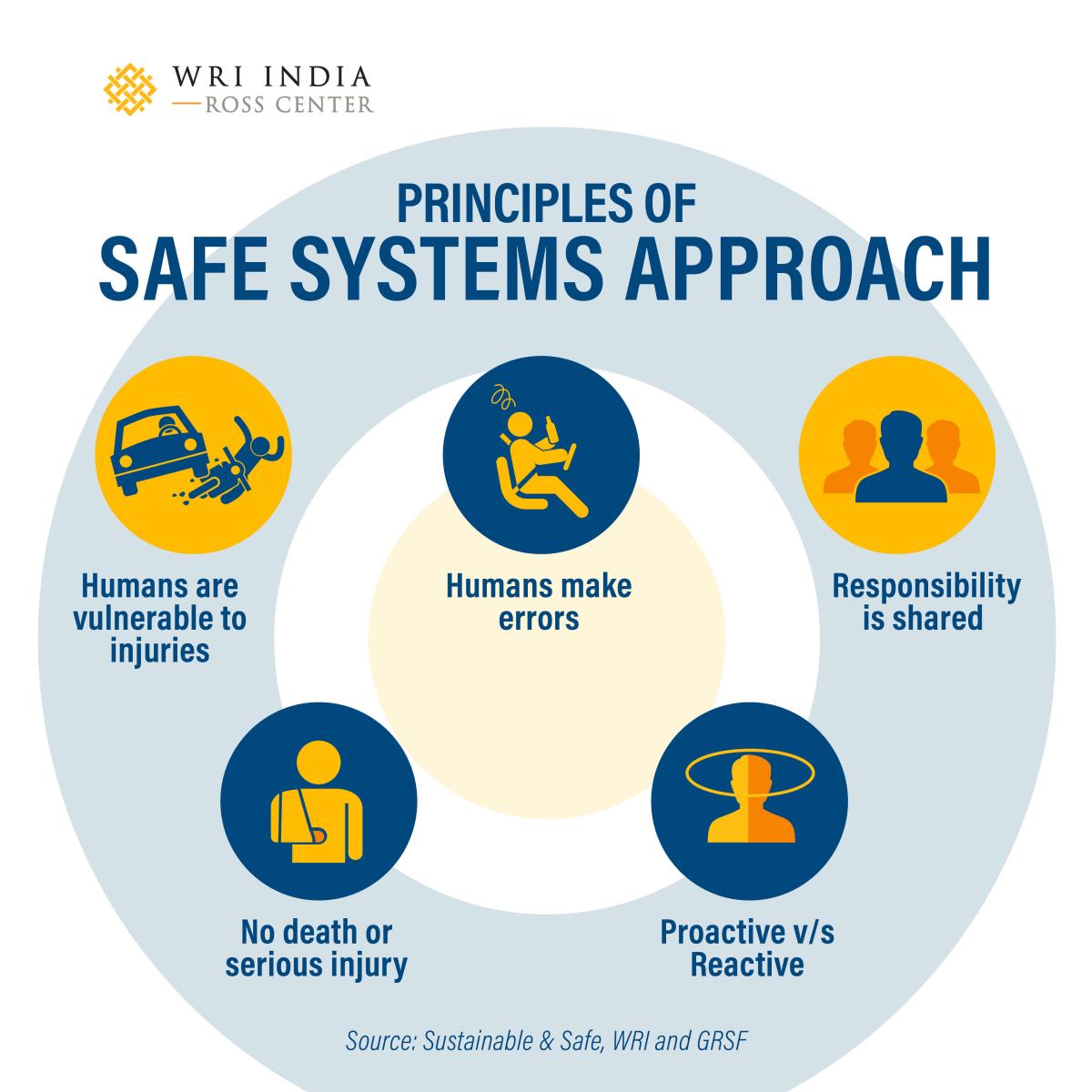
From Roads for Cars to Streets for People
Urban streets in India typically focus on the structural strength of the road, with little or no priority given to street design. This eventually enables smoother movement of pedestrians and vehicles. Most of our efforts go towards building new roads and widening existing roads when 36% of our population walks or cycles to work and only 3% use cars.
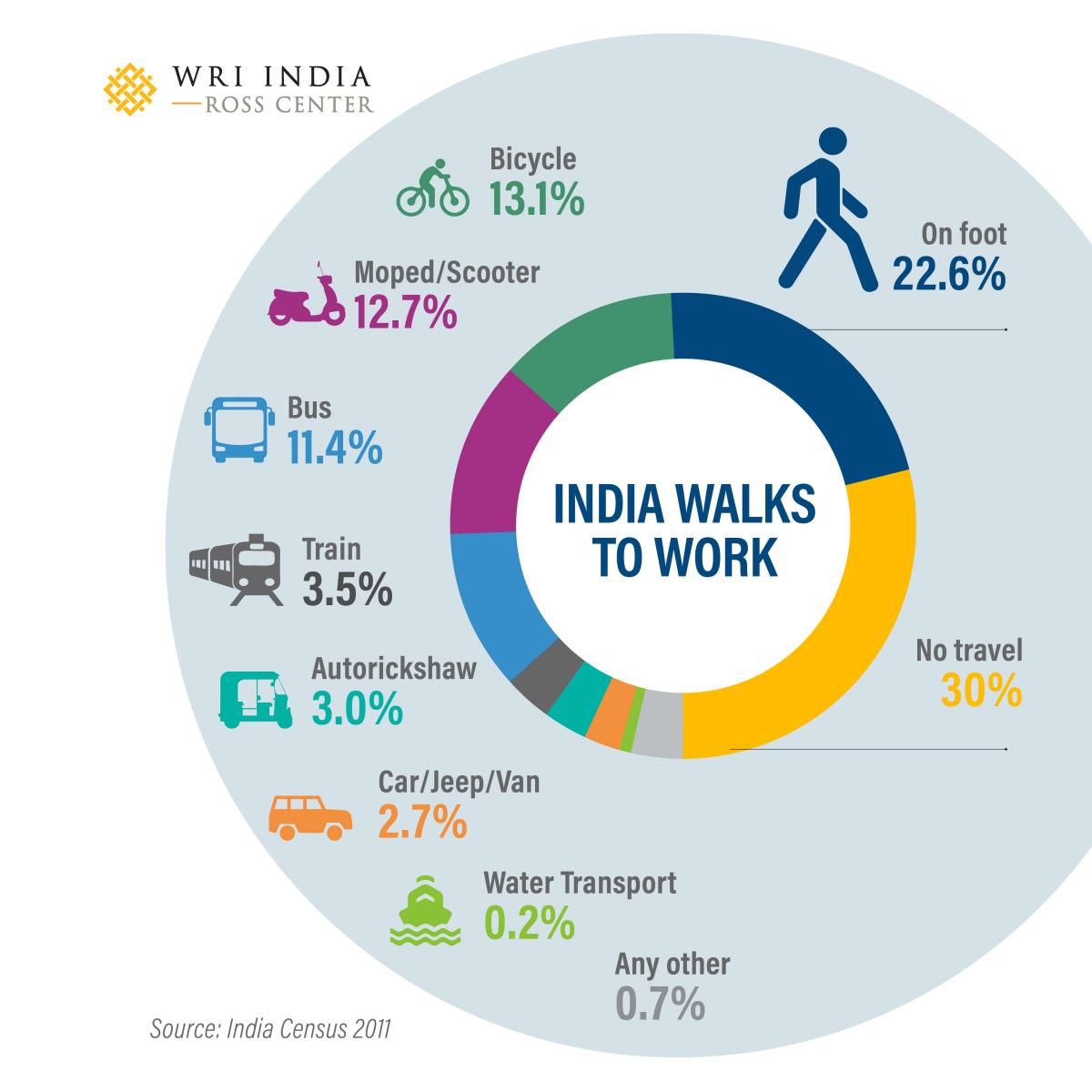
By 2050, 60% of India’s population will be living in cities. As more people move to cities, there is a need to evolve new standards for urban streets and engage with the right experts:
- Civil engineers to construct the street
- Architects and designers to determine effective street design
- Traffic engineers to ensure effective movement of all street users
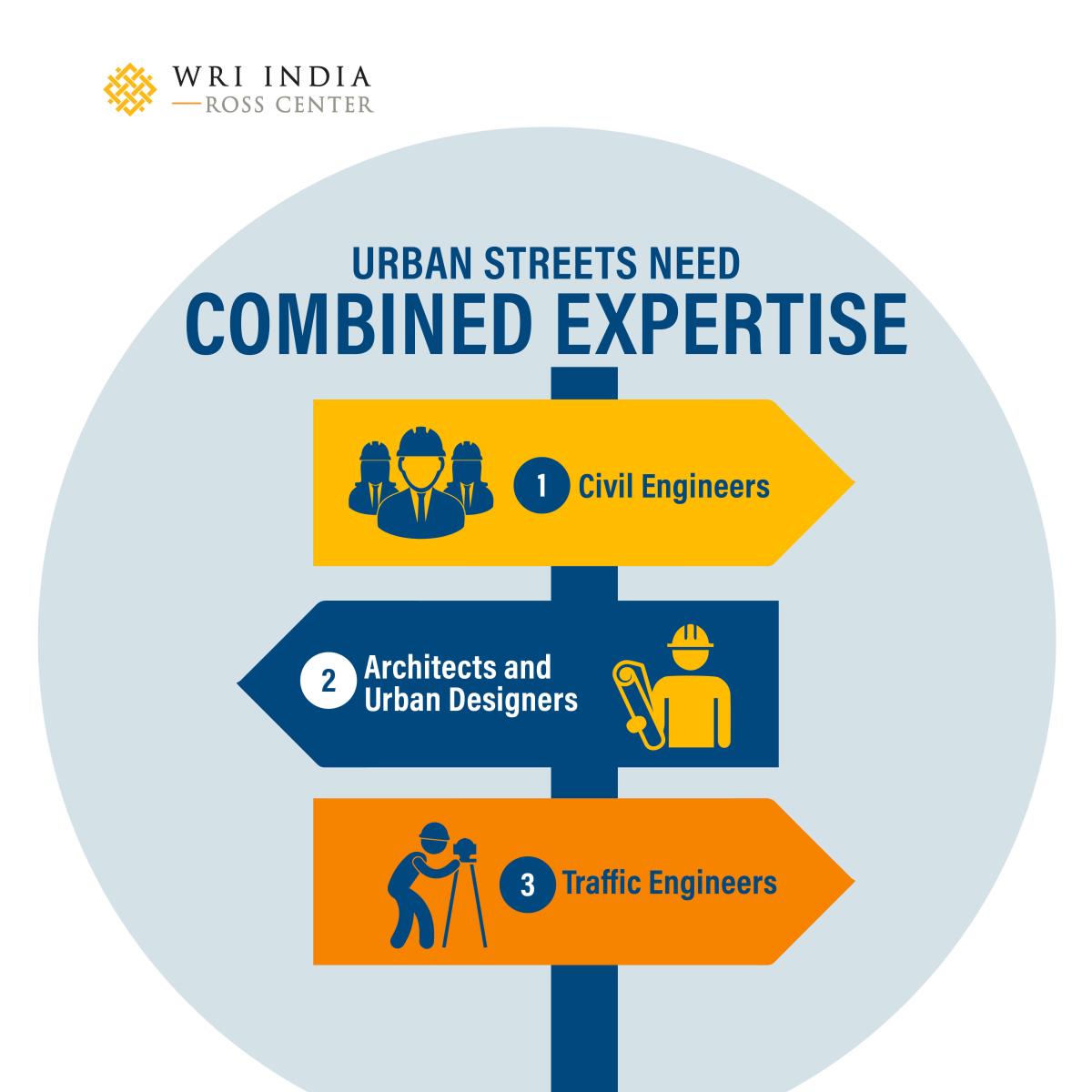
What is Traffic Engineering?
Traffic Engineering is a science that involves developing standards for road geometry, sidewalks, cycling infrastructure and crosswalks and ensuring its effective implementation. It focuses on three critical principles – design speed, traffic conflicts and shockwaves.
- Design speed: Design speed is the target speed at which drivers are intended to travel on a street, and not, as often misinterpreted, the maximum operating speed. This can be based on the number of people walking on the street, the vehicle count as well as the degree to which travel modes are mixed or separated. Speed is the primary factor in the likelihood of a crash. An increase in the average speed of just 1 kmph results in a 3% higher risk of a crash and a 4-5% increase in fatalities.
- Traffic conflict: This is an event involving two or more road users, in which the action of one causes the other to maneuver to avoid a collision. Traffic conflicts can be reduced through speed management and by providing the right infrastructure that does not put pedestrians in conflict with vehicles in the first place.
- Shock waves: Every time a traffic conflict occurs, a shock wave is created. This causes a ripple effect in the traffic flow, slowing down vehicles for at least 50 meters downstream (depending on the vehicles’ speed). These are also commonly referred to as traffic jams. Providing adequate space for pedestrians and designing for lower speeds significantly improves traffic flow by limiting the frequency of shock waves.
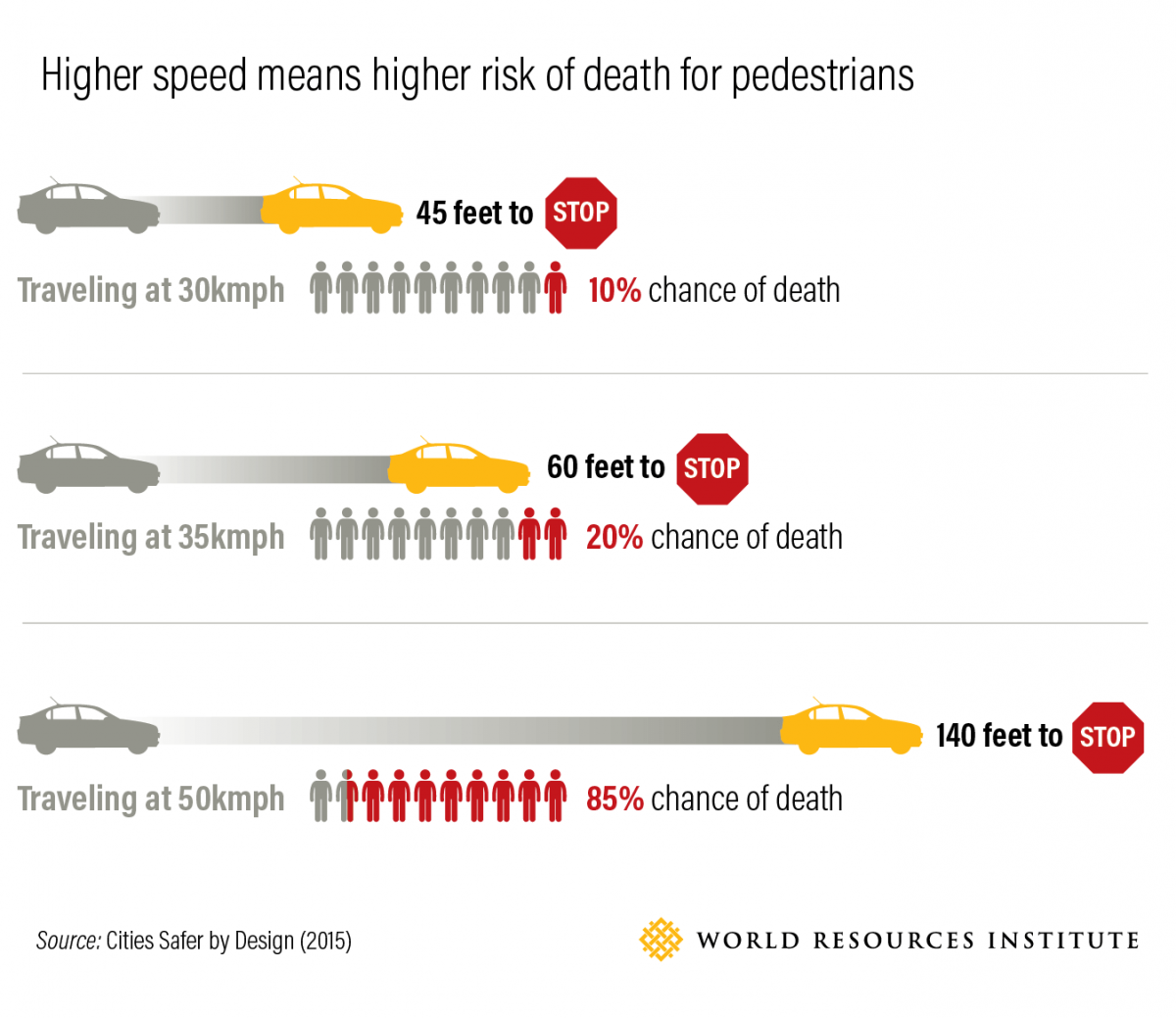
Why Design for Pedestrians?
Most citizens walk to work, school, the market or to the nearest public transit mode. Students are said to walk the most. In Delhi, 58% of all educational trips are done on foot. Cities must start counting these pedestrians and design streets for them.
1. Design for walking: WRI India recently developed an algorithm that can count pedestrians from images or video feeds. Designing streets that provide adequate spaces for pedestrians to safely walk, stop and cross a street reduces conflicts that slow down traffic while making walking safer.
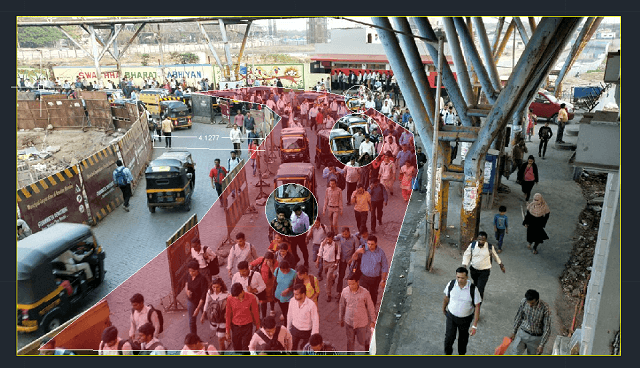
2. Designing for pedestrians improves overall efficiency: The algorithms also enable the identification of crashes or conflict points from video feeds.
Image two (below) shows the number of conflict points before interventions were introduced to effectively manage the intersection.
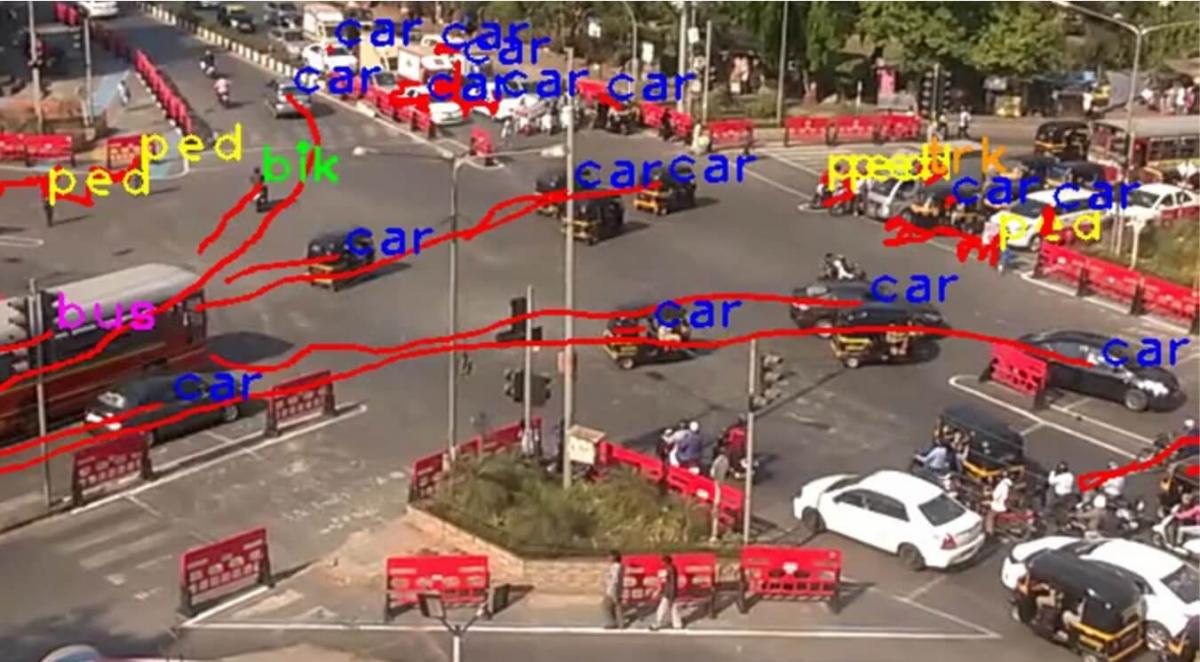
Image three (below) shows how elements such as a refuge island, a median and tighter curb radii reduce conflicts and improve the traffic flow.
This indicates how providing pedestrian infrastructure reduces the number of conflicts and can improve the existing street scenario for all road users.
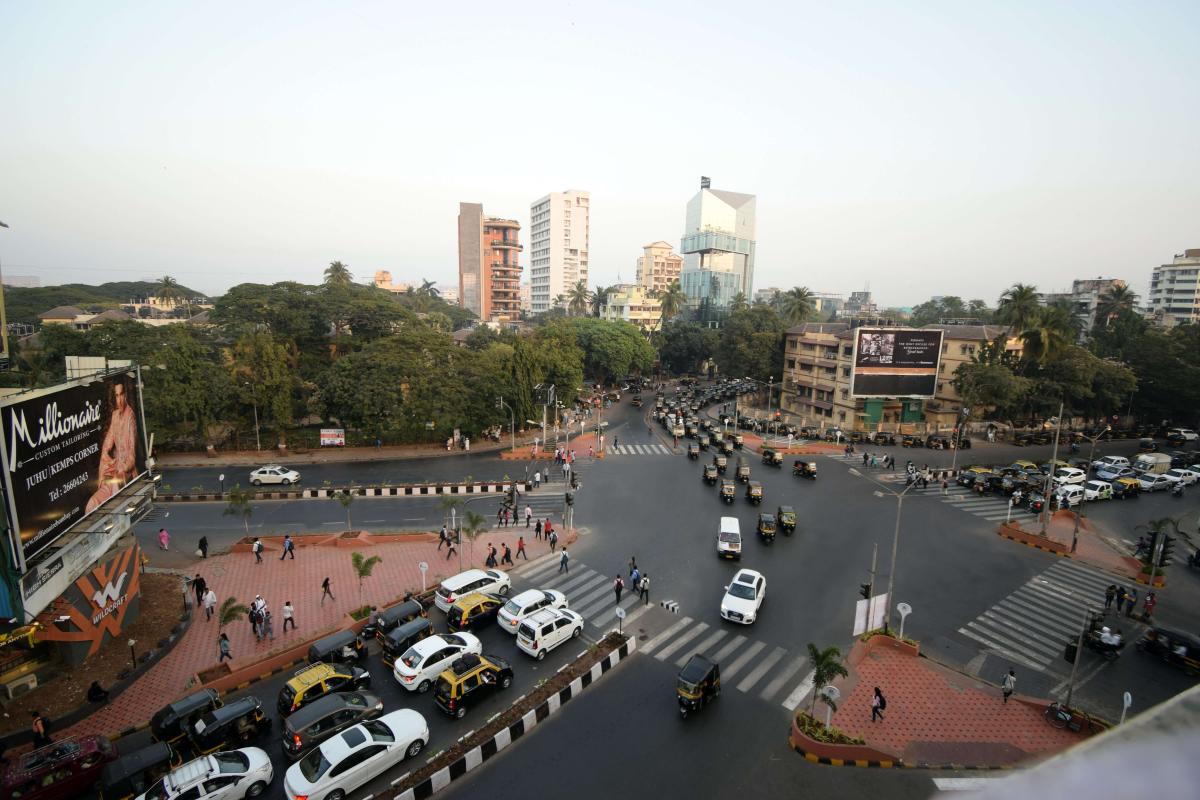
A WRI India pilot project in 2017 at Mumbai’s HP Petrol Pump Junction in Bandra saw the number of lanes and their width being standardized. This, coupled with the inclusion of pedestrian-infrastructure, lowered conflicts, improved traffic flow by 20% and improved accessibility for all street users.
It is pertinent to start considering streets as critical assets for both the city and its residents.
Safer and inclusive streets encourage more citizens to walk, cycle and use public transport. This not only smoothens traffic flow but also helps lower carbon emissions and improve health. By changing the way we design streets we can strengthen our climate commitments and humanize our cities.
Views are personal.